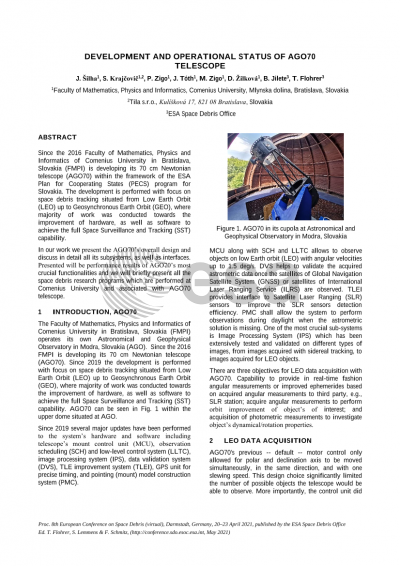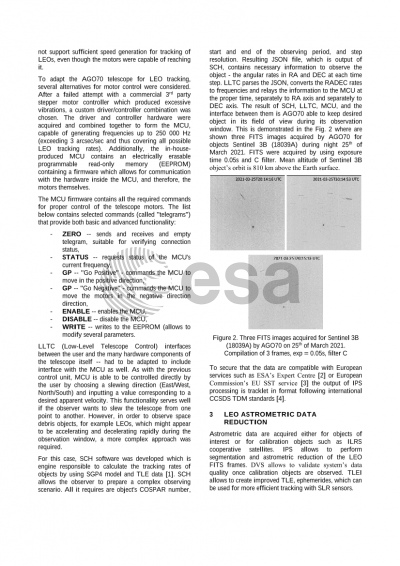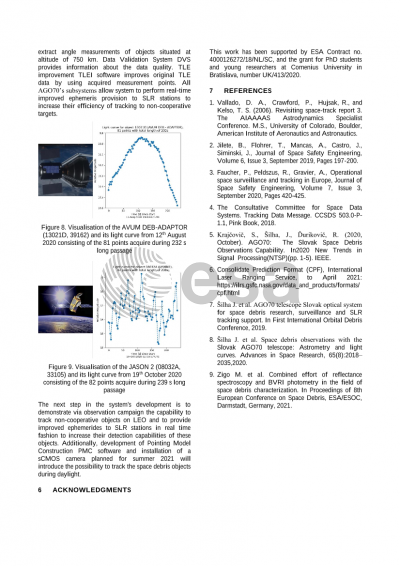Document details

Abstract
The Faculty of Mathematics, Physics and Informatics of Comenius University in Bratislava, Slovakia (FMPI) operates its own Astronomical and Geophysical Observatory in Modra, Slovakia (AGO). Since 2016 FMPI is developing its 70 cm Newtonian telescope (AGO70) within the framework of the ESA Plan for Cooperating States (PECS) program for Slovakia. The development is performed with focus on space debris tracking situated from Low Earth Orbit (LEO) up to Geosynchronous Earth Orbit (GEO), where majority of work was conducted towards the improvement of hardware, as well as software to achieve the full Space Surveillance and Tracking (SST) capability.
Since 2016 several major updates have been performed to the system’s hardware and software including telescope’s mount control unit (MCU), observation scheduling and control system (SCH, LLTC), image processing system (IPS), data validation system (DVS), TLE improvement system (TLEI), GPS unit for precise timing, and pointing model construction system (PMC). MCU along with SCH and LLTC allows to observe objects on low Earth orbits (LEO) with angular velocities up to 1.5 deg/s. DVS helps to validate the acquired astrometric data once the satellites of Global Navigation Satellite System (GNSS) are observed. TLE improvement provides interface to Satellite Laser Ranging (SLR) sensors to improve the SLR sensors detection efficiency. PMC shall allow the system to perform the observations during daylight when the astrometric solution is missing. One of the most crucial sub-system is IPS which has been extensively tested and validated on different types of images, from images acquired with sidereal tracking, to images acquired for LEO objects.
In our work we present the AGO70’s overall design and discuss in detail all its subsystems, as well as interfaces. Presented will be performance results of AGO70’s most crucial functionalities and discussed will be the planned future role of AGO70 in international collaboration concerning ESA and its Expert Centre or European Commission and its EU SST service. We will briefly present all the space debris research programs which are performed at Comenius University and associated with AGO70 telescope.
Preview






